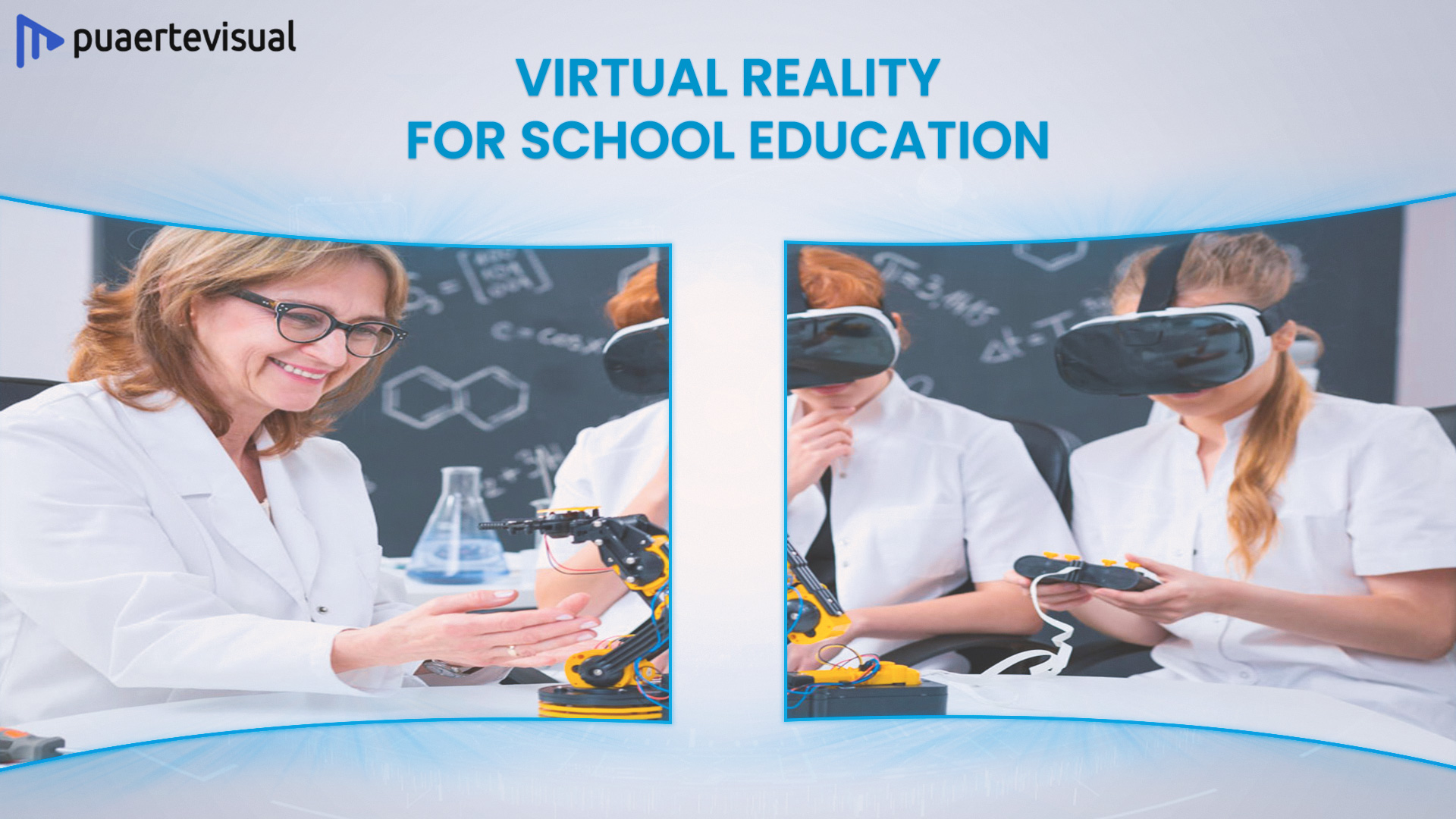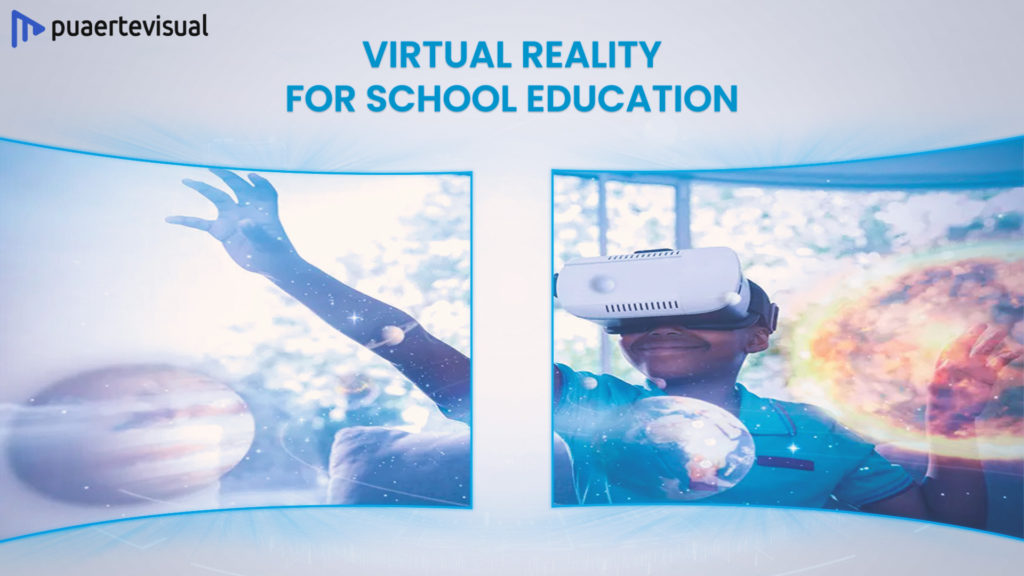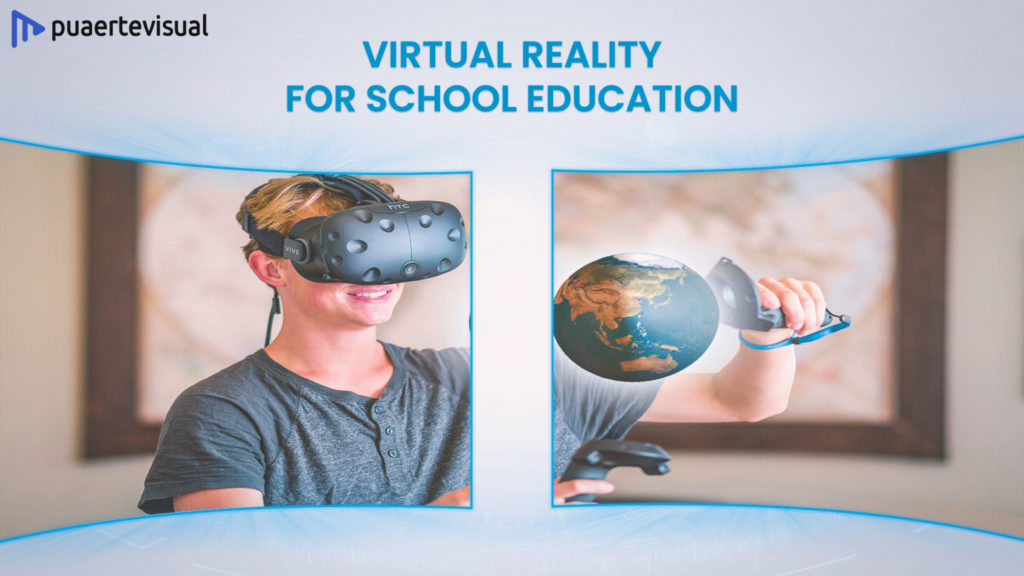
Virtual Reality is slowly but surely making its way into the education system. Many schools are starting to experiment with VR in the classroom, and the results have been positive so far. They help students learn in a more immersive and fun environment. They also assist students with disabilities in a more effective way.
VR can be used for a variety of purposes in school. This includes history lessons, science experiments, and even foreign language learning. In this blog post, we will discuss the benefits of Virtual Reality in education and how it is changing the way students learn!
Introduction Of VR In Schools
Virtual Reality has been around for the past four decades. Early work on it was done by Ian Sutherland as far back as the late 1960s. However, VR in schools is a concept that’s still new. It’s only been in the last few years that schools have started experimenting with Virtual Reality.
It’s no surprise that we learn better when we’re engaged and interested in the material we’re studying. VR technology helps to create a realistic, immersive environment for students. This allows them to learn conceptual and practical topics hands-on rather than just reading out of a textbook.
For example, in a history class, students can put on a VR headset and be transported back in time to ancient Rome or Greece. They can explore the city of Athens or walk through the Colosseum. This type of experiential learning will allow students to learn more and actually enjoy doing it!
Advantages Of Using Virtual Reality In Education

There are many advantages of Virtual Reality in education. These include:
- Immersive learning experiences for students.
- Virtual Reality allows students to learn at their own pace and according to their individual needs. A teacher can adjust the difficulty of an interactive game or activity so that all learners feel challenged but not overwhelmed by it!
- Virtual reality helps teachers improve classroom management. This is because there are fewer distractions for students who need help staying focused on what’s happening around them during class time.
- A major problem with traditional education methods like textbooks or lectures is that you’re only getting one perspective on whatever subject matter it’s about. Virtual Reality provides students with multiple perspectives for them to consider so they can come up with their own conclusions.
- For science-related subjects, Virtual Reality allows students to perform experiments without having to deal with the safety risks involved in real life. How fun would it be to be able to mix and match chemicals in the science lab without worrying about anything blowing up?
- Virtual field trips to museums, historic sites, and famous landmarks without leaving home or school! Virtual reality can also be used in classrooms with special needs children as well as adults who may have difficulty visiting these locations due to mobility issues.
How To Implement VR in Schools And Classrooms?

Now you know about all the advantages of Virtual Reality in education. Let’s take a look at how VR can be implemented in schools and classrooms.
Step 1 – Create A VR Learning Plan
Firstly, figure out what subjects you want to use Virtual Reality for in the classroom. There are many different VR applications available depending on what grade level you teach and the type of material you want to cover. Taking these factors into account, you should come up with an overall Virtual Reality learning plan for your school or classroom that includes all aspects from start to finish.
Step 2 – Acquire VR Hardware For Your Students
Secondly, you need hardware for Virtual Reality in the classroom. This can include a VR headset, computers that are powerful enough to run VR applications, and software that will allow you to create your own VR learning experiences. However, it need not always be expensive. Nowadays you can even create an immersive classroom using projectors and screens to transform the classroom into a virtual environment.
Step 3 – Proper VR Training For Teachers And Students
Lastly, make sure there is proper training available for both teachers and students on how to use Virtual Reality in the classroom. VR can be a little daunting at first. But with proper training, everyone will be able to get the most out of this technology! There are tons of resources out there on how to use Virtual Reality in education so they should be quite easy to find.
Examples Of VR Software You Can Use For Schools
We’ll now show you a couple of real-life VR Software and programs that you can use to enhance the learning experience of students.
1. 4D Interactive Anatomy
This is a software that allows students to explore the anatomy of the human body in VR. They can check out various organs, bones, tissue, and even rotate them around to see how they move. This VR application will give the students a better understanding of human anatomy and is great for teaching biology or medical studies.
2. SkyView
Want to teach students about the stars, planets, and constellations? SkyView is the perfect VR application! It allows students to explore space in VR and learn about different planets, stars, and galaxies. They can even take a closer look at our own Solar System. This is great for astronomy classes or science lessons on space.
3. Google Expeditions
Google Expeditions is a VR application that allows students to explore different parts of the world in VR. They can visit famous landmarks, go on virtual field trips, and even experience history in VR. Because of this, in subjects like History and Geography, VR can help bring the material to life for students and allow them to explore places they would never be able to visit in person.
Conclusion
Virtual Reality can be a great tool in the classroom and VR education is already becoming a thing. VR provides students with unique learning experiences where they have access to applications that are not only fun, but educational as well!
Virtual reality gives children more opportunities for hands-on learning. This makes the classroom a more fun and engaging place to be. VR has already been implemented in many schools around the world, so it’s only a matter of time before it becomes the gold standard for education!

Comments are closed.